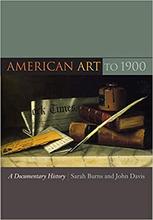More about Winslow Homer
- All
- Info
- Shop
Works by Winslow Homer

Sr. Contributor
Winslow Homer stands next to Whistler and Eakins as a giant of 19th-Century American art for his pioneering impressionistic style reminiscent of Manet.
While his works provide a vivid record his time and travels, the famously guarded artist left tantalizingly few hints as to the nature of his private life. Luckily, art historians have gamely stepped up to fill in what Homer stubbornly insisted on keeping secret, with theories ranging from a broken heart that never mended, to a gender-bending model or even interracial gay romance.
The better-recorded part of Homer’s life began with a vagabond father who abandoned the family for the California Gold Rush, and an artistic mother who nurtured her son’s creative genius. Though Homer had almost no formal training, he briskly surpassed his academic superiors in natural talent and instinct. He had a successful career as a commercial lithographer, but quit to pursue his true passion of freelance painting, stating, “From the time I took my nose off that lithographic stone, I have had no master, and never shall have any.”
Soon came the Civil War, in which Homer got his first prominent exposure recording scenes of harrowing violence as well as daily life in camps and on the homefront, notably including the experiences of women and African Americans. After the War his interest in female subjects flourished with scenes of fashionable ladies at play on beaches and croquet fields, but Homer’s preoccupation with pretty society girls was about to shatter.
A friend of Homer said that he “had the usual number of love affairs,” but an art student named Helena De Kay is the leading candidate for the love of Homer’s life (at least among females, but more on that later). She was the only student Homer ever agreed to teach, and he wrote her passionate letters comparing her beauty to a “Beethoven symphony.” Around the time Helena became engaged to another man, Homer painted a portrait of her with a single rose wilting on the floor, and his letters turned vaguely melancholic. Perhaps reflecting a broken heart, his artistic interest in refined women abruptly ended and his focus shifted to robust, working-class women and well-muscled men.
The latter muse has led some to speculate that Homer’s perpetual bachelorhood was actually a symptom of closeted homosexuality, a claim most mainstream art historians reject. In defense of this theory, analysis suggests that a “mystery woman” appearing in some of his paintings may in fact have been a boy in drag. Gay rumors are further fueled by Homer’s close friendship with fellow artist Albert Kesley, with whom he lived in Paris in his youth. The roommates posed for a “couples” photo which Kelsey inscribed as “Damon and Pythias,” ancient Greek models of ideal male friendship often associated with queer sexuality. Homer later sketched a provocative nude of Kelsey riding a sea turtle.
Homer had two significant relationships later in life. The first was a seemingly platonic attachment to his brother’s wife Mattie, with whom he bonded over his beloved mother’s final illness and death. The other was an apparent 15-year partnership with a formerly enslaved African American named Lewis Wright. Though Wright was officially a servant, he and Homer were intimate enough to worry friends and neighbors, partly from racial prejudice in addition to undisclosed factors.
Whether he preferred women, men, both, or neither, Homer was first and foremost “married to his work.” He eventually retreated to near-hermithood, feverishly painting in a remodeled carriage house just a few steps from the tumultuous seas of Maine. He loathed company so much in his last years that he threatened to shoot anyone who bothered him after midnight, and while he was painting on the cliffside, he posted signs warning of snakes and mice to scare away passersby. That good old, “Um, sorry, you can’t come over here because snakes,” excuse...works every time.
Sources
- Beam, Philip C. Winslow Homer at Prout’s Neck. Lanham, Maryland: Little, Brown, 1966. https://books.google.com/books?isbn=1608933490
- Cikovsky, Jr., Nicolai. Winslow Homer. New York: Henry N. Abrams, 1990.
- Cooper, Helen A. Winslow Homer Watercolors. New Haven and London: Yale University Press, 1986. https://books.google.com/books/yup?id=k1xUxtXq3mYC&printsec=frontcover&…
- Fiegl, Amanda. “No More Long Faces.” Smithsonian Magazine, May 2008. https://www.smithsonianmag.com/arts-culture/no-more-long-faces-41431400/
- Johns, Elizabeth. Winslow Homer: The Nature of Observation. Berkeley: University of California Press, 2002.
- Mann, Richard G. glbtq Encyclopedia. “Homer, Winslow.” glbtq, Inc., 2015. http://www.glbtqarchive.com/arts/homer_w_A.pdf
- Poole, Robert M. “Hidden Depths.” Smithsonian Magazine, May 2008. https://www.smithsonianmag.com/arts-culture/hidden-depths-38616301/
- Summers, Claude J. The Queer Encyclopedia of the Visual Arts. “Male Camaraderie: Homer and Eakins.” San Francisco: Cleis Press Inc., 2004. https://books.google.com/books?isbn=1573441910
Featured Content
Here is what Wikipedia says about Winslow Homer
Winslow Homer (February 24, 1836 – September 29, 1910) was an American landscape painter and illustrator, best known for his marine subjects. He is considered one of the foremost painters of 19th-century America and a preeminent figure in American art in general.
Largely self-taught, Homer began his career working as a commercial illustrator. He subsequently took up oil painting and produced major studio works characterized by the weight and density he exploited from the medium. He also worked extensively in watercolor, creating a fluid and prolific oeuvre, primarily chronicling his working vacations.
Check out the full Wikipedia article about Winslow Homer

























